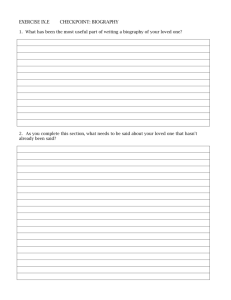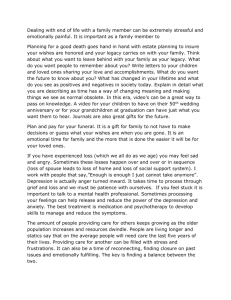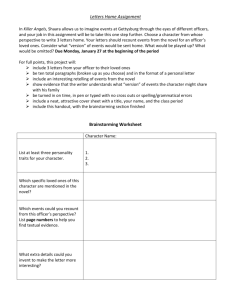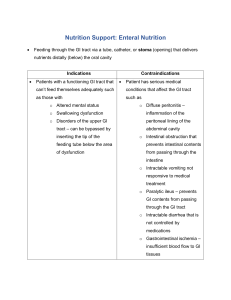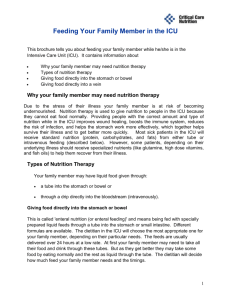The Pros and Cons of Feeding Tubes
advertisement
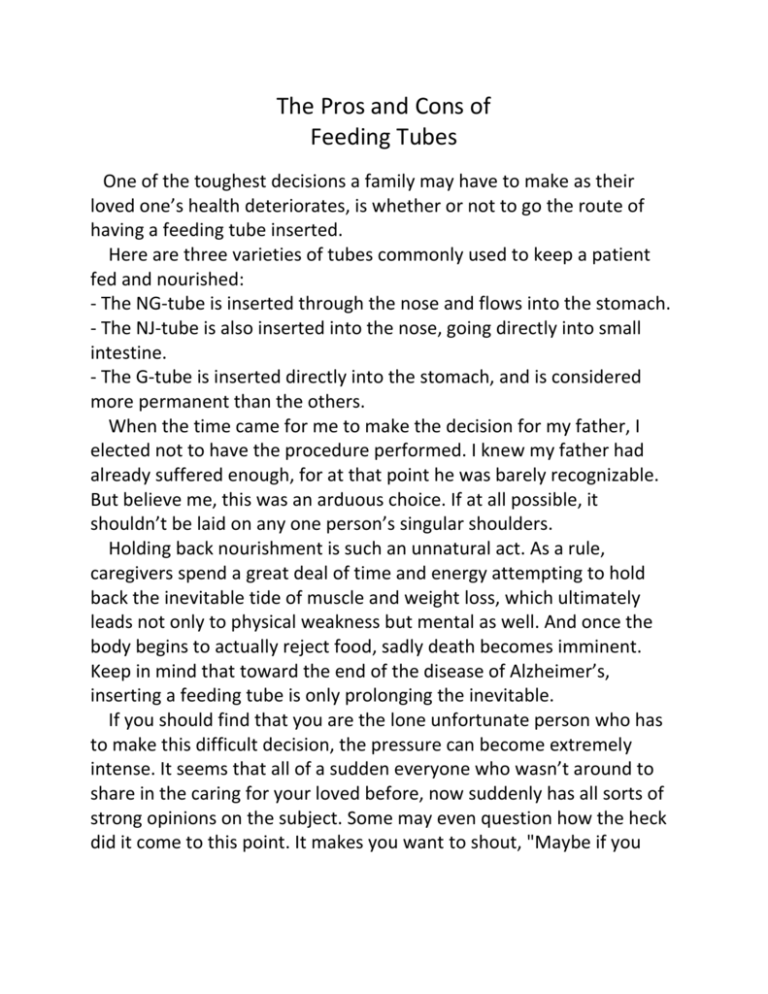
The Pros and Cons of Feeding Tubes One of the toughest decisions a family may have to make as their loved one’s health deteriorates, is whether or not to go the route of having a feeding tube inserted. Here are three varieties of tubes commonly used to keep a patient fed and nourished: - The NG-tube is inserted through the nose and flows into the stomach. - The NJ-tube is also inserted into the nose, going directly into small intestine. - The G-tube is inserted directly into the stomach, and is considered more permanent than the others. When the time came for me to make the decision for my father, I elected not to have the procedure performed. I knew my father had already suffered enough, for at that point he was barely recognizable. But believe me, this was an arduous choice. If at all possible, it shouldn’t be laid on any one person’s singular shoulders. Holding back nourishment is such an unnatural act. As a rule, caregivers spend a great deal of time and energy attempting to hold back the inevitable tide of muscle and weight loss, which ultimately leads not only to physical weakness but mental as well. And once the body begins to actually reject food, sadly death becomes imminent. Keep in mind that toward the end of the disease of Alzheimer’s, inserting a feeding tube is only prolonging the inevitable. If you should find that you are the lone unfortunate person who has to make this difficult decision, the pressure can become extremely intense. It seems that all of a sudden everyone who wasn’t around to share in the caring for your loved before, now suddenly has all sorts of strong opinions on the subject. Some may even question how the heck did it come to this point. It makes you want to shout, "Maybe if you would have been around to help, you wouldn’t have to ask this question." Next come the medical professionals, demanding that you make this hard decision while you stand in their sterile offices, often with no time to think it through. They express an urgency of keeping your loved one going, but what is usually not mentioned in a ten minute conversation are the problems that could occur; the high risk of infection, nausea, vomiting, diarrhea and, if patients are suffering from dementia, they may become bothered and confused, ultimately resulting in their pulling tubes out by themselves. This is only one of a myriad of reasons I’ve always advised that patients’ wishes be made clear as soon as possible following the initial diagnosis. Advance directives and/or do not resuscitate (DNR) orders need to be discussed along with financial concerns while they’re still cognitive enough to do so. This will help remove some of the heavy guilt that falls on the person who has to make this grave decision. Toward the end of life I feel it’s best to concentrate on making sure a loved one remains as comfortable as possible. This way he or she can peacefully begin the next part of the journey.


